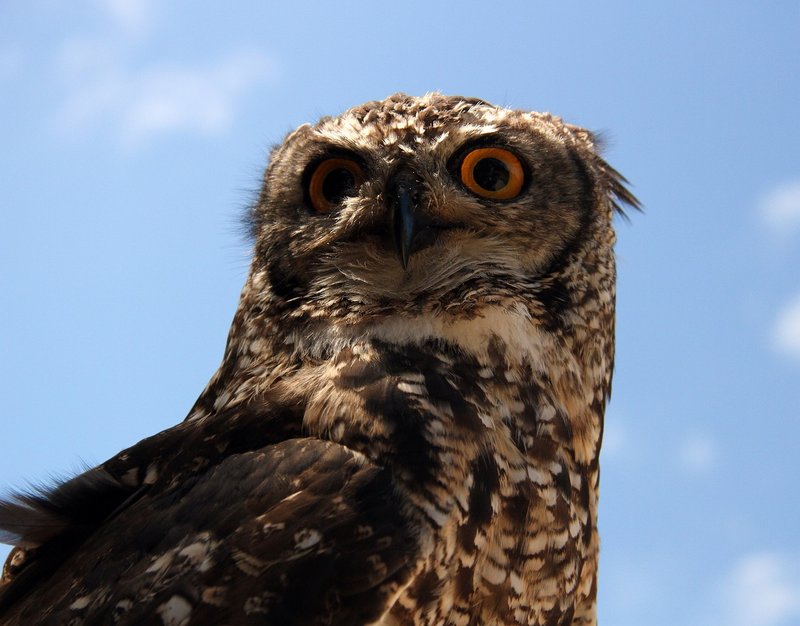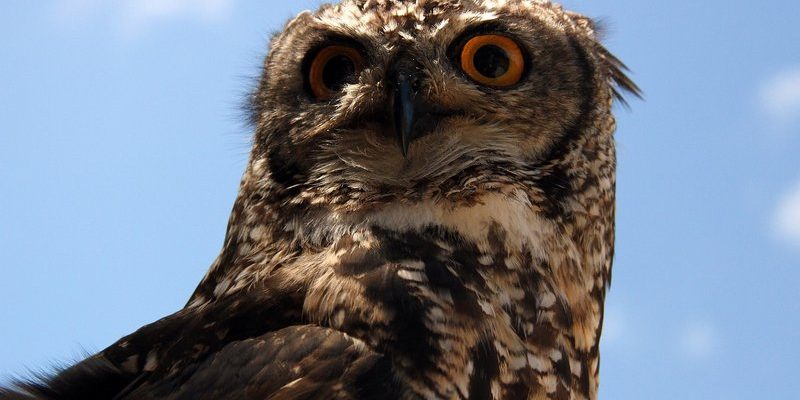
Let’s dig deeper into the world of owls. You might think they’re just birds that come out at night, but there’s a lot more to them than meets the eye. From their unique adaptations to their crucial role in the ecosystem, owls are truly remarkable. Here are ten surprising facts that will make you look at these creatures in a whole new light.
1. Owls Have Incredibly Advanced Hearing
If you’ve ever listened closely to the woods at night, you might have noticed just how clearly you can hear sounds. Now, imagine what it’s like for an owl. Their ears are specially designed to detect even the faintest rustle of prey. Owls have asymmetrical ear placements, meaning one ear is higher than the other. This unique feature helps them pinpoint the exact location of sounds in three-dimensional space.
When hunting, an owl can hear a mouse squeak from up to 100 feet away—talk about a superpower! This incredible hearing allows them to hunt in complete darkness, making them efficient predators. So, the next time you hear a hoot in the night, remember that there’s a highly skilled hunter honing in on its next meal.
2. Their Silent Flight is a Marvel of Evolution
You might think of owls as stealthy ninjas of the bird world. This isn’t just poetic—it’s science! Owls have specialized wing feathers that allow them to fly silently. Unlike most birds, their wing flaps produce very little noise, thanks to a unique serrated leading edge on their feathers.
This silent approach is crucial when hunting for small animals like rodents. By sneaking up on their prey, owls can pounce without giving them a chance to escape. Imagine if you could walk without making a single sound—pretty cool, right? This adaptation gives owls a significant advantage in the wild.
3. Owls Are Not All Nocturnal
While many owls are known for their night-time activities, not all owls are nocturnal. Some species, like the burrowing owl, are actually diurnal, meaning they’re active during the day. It can be surprising to learn that owls like the Eastern Screech Owl adapt their hunting habits based on the availability of prey.
In more rural areas, diurnal owls can often be seen hunting in the early morning or late afternoon, taking advantage of warm sunlight to help them spot their meals. This flexibility shows just how adaptable owls can be to different environments.
4. Their Eyes Are Not Designed for Movement
When you look into an owl’s face, you might notice those enormous, round eyes staring back at you. But did you know that an owl can’t move its eyes? That’s right! Their eyes are fixed in place within their sockets, which is why they have to turn their head to look around.
Owls can rotate their heads up to 270 degrees, which gives them an incredible field of vision. This way, they can survey their surroundings without moving their bodies. Think of it like having a super flexible neck; it’s all about adapting to their needs as predators.
5. They Come in Many Shapes and Sizes
Not all owls look the same! There are about 200 different species of owls worldwide, ranging from the tiny Elf Owl, which is about the size of a sparrow, to the enormous Great Horned Owl. These species vary not only in size but also in feather patterns, colors, and habitats.
Some owls, like the Barn Owl, have heart-shaped faces, while others, like the Barred Owl, have beautiful streaked feathers. It’s fascinating to see how they’ve evolved to adapt to their environments. The diversity among these birds is one of the things that makes them so intriguing to study.
6. Owls Regurgitate Pellets
You might be wondering what happens when an owl eats. Here’s the thing: they don’t digest everything. Owls have a unique way of dealing with the parts of their prey that they can’t digest, like bones and feathers. They form these materials into what are called pellets, which they later regurgitate.
These pellets can provide a wealth of information to scientists and bird enthusiasts alike. By studying them, researchers can learn about an owl’s diet and what types of prey are available in their habitat. So, if you find a small, round pellet in the woods, it just might be an owl’s leftovers!
7. Owls Have Unique Vocalizations
When you think of owls, the classic “hoot” often comes to mind. However, owls communicate using a variety of sounds. Some species produce screeches, whistles, and even barks. Each of these calls serves a different purpose, like defending territory or attracting a mate.
Fun fact: the Eastern Screech Owl is known for its hauntingly beautiful trill, which can resonate through the night. If you find yourself in a quiet forest, listen closely—you might hear a symphony of owl sounds, each telling its own story.
8. They’re Excellent Parents
Owls might not seem nurturing at first glance, but they can be incredibly devoted parents. Many species take turns incubating their eggs and hunting for food. The female typically does most of the incubating, while the male brings back meals for her and the chicks.
Once the eggs hatch, owls care for their young until they’re ready to fly. The chicks, called owlets, often stay with their parents for several months, learning to hunt and survive in the wild. Watching a parent owl care for its young is a heartwarming sight, showcasing the bond they share.
9. They Play a Key Role in the Ecosystem
Owls aren’t just fascinating; they play a critical role in maintaining the balance of nature. As predators, they help control populations of small mammals, birds, and insects. By keeping these populations in check, owls contribute to the health of their ecosystems.
For example, with fewer rodents around, crops can thrive, and disease transmission from these animals decreases. Protecting owl habitats is essential for preserving the balance in nature, reminding us that every creature, big or small, plays a vital role.
10. Owls Face Threats from Habitat Loss
Despite their incredible adaptations and ecological importance, owls face significant threats from human activities. Habitat destruction due to urban development, agriculture, and logging poses a serious risk to their populations.
Moreover, climate change is altering their habitats and food availability. Conservation efforts, such as protecting nesting sites and promoting awareness, are crucial to ensuring these majestic birds continue to thrive. If you’re passionate about owls, consider supporting local wildlife organizations working to protect their habitats.
While owls may appear mysterious and distant, they’re really remarkable birds with fascinating traits. From their impressive hunting skills to their crucial role in the ecosystem, understanding owls gives us a deeper appreciation for the natural world. The next time you hear an owl hoot at night, remember all the incredible things you’ve learned about them!

